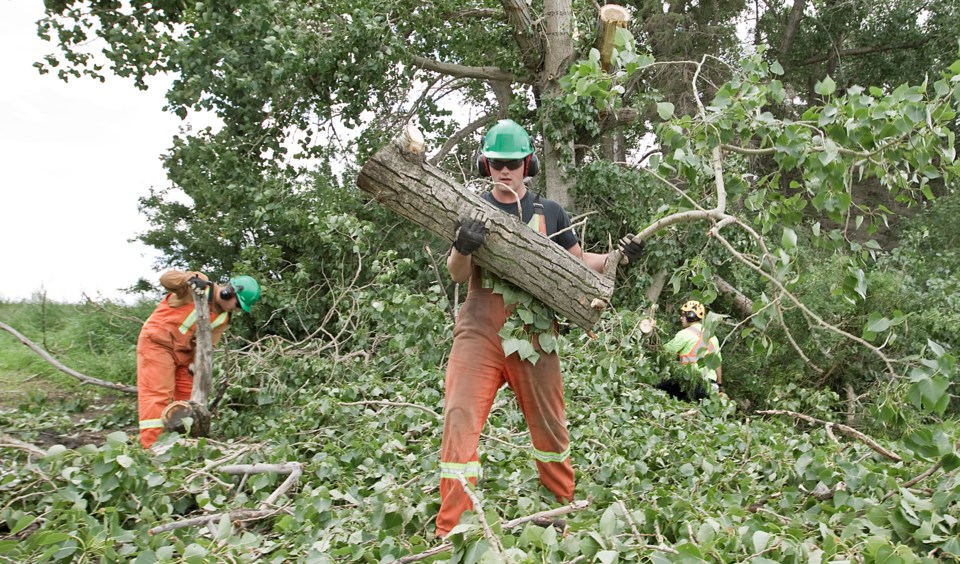Urban trees grow and die much faster than their rural counterparts, suggests a new study, which means cities can’t just plant their way to a bigger forest.
Ian Smith and his team at Boston University published a study in PLOS ONE Wednesday on accelerated growth and death in street trees. In an email interview, Smith said they decided to study this issue to test the viability of urban forestry campaigns.
St. Albert hopes to have trees covering 20 per cent of its land by 2037 under its urban forest management plan, up from the current 13.
Smith's team examined growth and death rates in trees in Boston between 2005 and 2014 using tree surveys and compared them to trees in a rural forest about an hour and a half to the west near Petersham, Massachusetts.
The team found the Boston trees grew about 0.8 cm wider each year during the study period, compared to just 0.2 cm each year for the wild ones. Trees less than 25 cm wide grew about five times as fast in the city than they did in the country. Urban trees were twice as likely to die in any given year than rural ones, and were most likely to die when very small or big – unlike rural ones, which became less likely to die the bigger they got.
“Urban trees have many opportunities for growth that rural forest do not,” Smith said, including elevated CO2 and nitrogen levels from pollution (which boosts nutrients), less crowding and therefore more light, and a longer growing season due to the urban heat island effect. Conversely, they also face many threats you don’t find in the countryside. Trees may struggle to get water and establish roots when first planted, and can run out of soil space when they grow big.
Smith said he was surprised to find Boston’s tree planting rate (2.9 per cent) was almost the same as its tree death rate (3.1 per cent). Because those new trees were not as big as the ones they replaced, the city was actually shrinking, not growing, its canopy over time. Smith’s team projected that the total biomass of Boston’s forests would drop by about 26 per cent by 2030 relative to 2006 if current forest practices continued, while the equivalent rural forest would bulk up by 34 per cent.
St. Albert parks manager and tree specialist Louise Stewart said she wasn’t surprised by Smith’s findings.
“Street trees do do better at the start and they do probably decline quicker,” she said, as they are pressured by salt, cars, sidewalks and many other factors.
She agreed with Smith’s conclusion that proper tree maintenance was vital if a community wanted to grow its tree canopy.
“Planting is just one tool in the toolbox,” she said, and replacing tree quality with tree quantity isn’t the right way to manage a forest.
Smith said cities should focus maintenance efforts on their smallest and biggest trees, as those are the most vulnerable. New, small trees need to last almost 33 years before they become carbon-neutral (you have to offset emissions from producing and caring for the tree), while old, big ones offer carbon storage younger ones can’t match.
Stewart said St. Albert crews try to set up new trees for success by watering them for two years and pruning them early, and have started using special sidewalk structures called Silva Cells downtown to give trees more root space. Crews regularly remove dead branches from older trees and also plant younger ones around them so we don’t lose as much canopy when the old ones die. The city’s tree inventory (set for be finished this fall) will establish a baseline for the health of every tree in town so crews can improve them over time.
The study can be found at bit.ly/2LBE6Ev.




